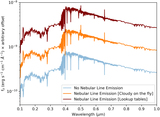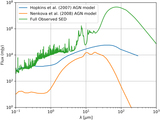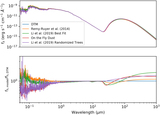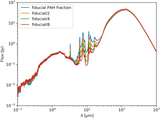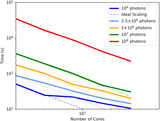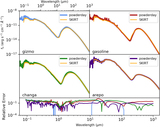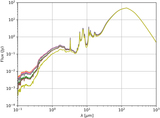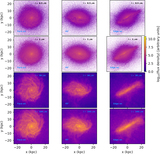Image Details
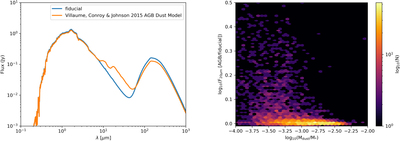
Caption: Figure 12.
Impact of circumstellar AGB dust on the mid-IR SEDs of galaxies as a demonstration of the impact of stellar physics on POWDERDAY radiative transfer models. Left: example SEDs (without PAH models) of a quiescent galaxy with a low dust mass fraction from the SIMBA M25N512 simulation both including (orange) and not including (blue) the Villaume et al. (2015) model for circumstellar AGB dust. As is evident, in this galaxy with relatively low diffuse dust, the mid-IR flux is dominated by circumstellar AGB dust. Right: generalization of the left plot for 3000 galaxies at ﹩z=[0,1,2]﹩ from the same SIMBA M25N512 model, where we show the ratio of the ﹩24\,\mu {\rm{m}}﹩ flux density (as a proxy for the mid-IR) for a model with and without AGB dust vs. the fractional dust content of the galaxy. Colored points show a heat map of individual galaxy snapshots, with the color bar on the right. When the diffuse dust content is sufficiently large, the flux in the mid-IR is dominated by diffuse dust, and the ratio of mid-IR flux for both models converges to 1.
Copyright and Terms & Conditions
© 2021. The American Astronomical Society. All rights reserved.



